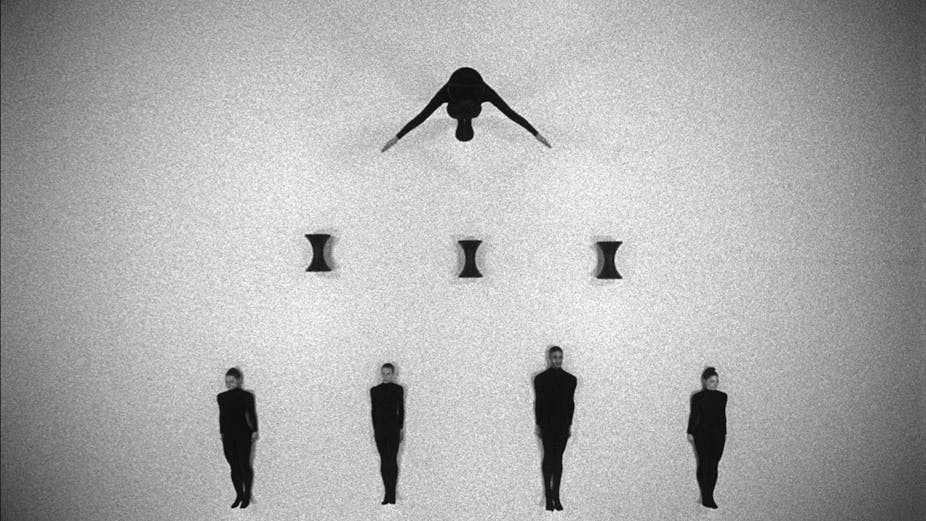Duncan Campbell has won the 2014 Turner Prize. This is a well-deserved accolade for an extraordinary work (although I preferred Tris Vonna-Mitchell for many reasons, maybe a yearning for that clunking and whirring of the old slide projector). But what I’ve found most notable about this year’s prize are the complaints – that the winning work is “more like a lecture than an artwork”, or that the prize has “lost its edge”. These are easy shots to take, and they ignore a far more interesting question – whether the maturing of the prize is actually a very good thing.
I am an art historian who likes looking back to the 20th century. I also like my art to be big, bold, at least 60 years old, flat, painterly and preferably abstract. The artists I write about are usually dead, or at least too old to care anymore about what other people say.
I also like philosophy. I like to think about what art carries around with it conceptually, how it develops, what we expect from it, what makes it live or die.
In other words, I’m not afraid of taking time to think about things, particularly art.
I’m not particularly tuned into or turned on by contemporary art, but I know a great deal about its ancestry. When I say “ancestry” I don’t just mean all those artworks of old, but the ideas, debates and exhibitions that have carried them through; from before their conception, when the paint hit the canvas, until the present day, when they become heavy, old and encumbered with words. So you would probably assume that something as newfangled as the Turner Prize wouldn’t excite someone like me, but it does.

No fun
And so some comments made by Will Gompertz, The BBC’s arts editor, made me more than a little cross. He accused this year’s nominated work of not being “fun” or “challenging”; not like it was in the days when the Young British Artists were all the rage. He went on to say that this year’s crop is much more introspective and cerebral. He thought that the artists seem to be concentrating on art history rather than commenting on the challenges of the contemporary art, of which they are a part.
But art history and contemporary art are not mutually exclusive. The art presented in this Turner Prize thinks, it cogitates, it looks to its past. It has grown up, matured, reached middle age. It explicitly and knowingly claims from its ancestry, from film, advertising, printing, textiles, photography and performance. These artists use concepts, materials, processes and ideas from the broader reaches of art history; from the agitators of Futurism, the questioning language and performances of Dada, to the collages of Schwitters, the collaborative ventures of Warhol’s Factory and the assemblages of Rauschenberg.
This stuff isn’t “new” in its purest sense, but no art is, or ever has been. These artists garner resources from the past and then work these into their new social and cultural environments. In doing so, they question art, its moral imperatives, its political function, as well as how it can engage a widening public.
It may not shock in the same way as say Hirst or Emin did in the 1990s, but then focusing on this pays a great disservice to their work too – their art was, and is, far more complex and “cerebral” than many critics would care or want to admit.
What I love about this year’s nominated work is that it has been carefully considered and it asks you to take time to think. There may not be many bells and whistles, these artists are not necessarily poking their tongue out at the establishment, but instead are quietly and gently questioning it.

It for Others
Which brings me on to my admiration for Campbell’s winning work, a 54-minute film called It for Others. It’s a medley of many things, part lecture, part dance, part window into a museum of objects, a response to Chris Marker and Alain Resnais’ 1953 film Statues Also Die, framed within a new context.
This framing eloquently questions the ways in which we first acquired and now display art of the “primitive”. Campbell riffles through the archives of art histories and so brings back to light the very questions the art of the past was itself trying to articulate. He collages these questions with images of conspicuous consumption, photographs, film stills; the overlapping histories of objects and their visual cultures in a way that still inform our own.
In a world that is increasingly complex, as our experiences becomes frighteningly mediated by a rapid succession of images, Campbell’s work is important. His intelligence and careful working through of a whole range of important questions and ideas may seem “timid” or “introspective” to some, but in a world where shock values are becoming extreme, where knowledge is becoming fast and furious, particularly via the media, I think a slower, “middle-aged” and crafted response is not necessarily a bad thing.
All the nominated work has a strong visual impact, this is because not only are they beautifully crafted, as all art of worth should be, it is also intelligent; it is cerebral and should be celebrated for that, not dismissed as “safe”.

